Pediatric Radiology > Genitorinary > Voiding Cystourethrogram > The Evaluation of Vesicoureteral Reflux - Technique
The Evaluation of Vesicoureteral Reflux - Technique
![]()
| The standard normal VCUG should consist of seven films. A preliminary scout film should always be obtained to document any unusual densities or calcifications so not to confuse these with contrast which will have a similar density. Attention should also be drawn to the renal soft tissue outlines to detect any renal developmental anomalies. The spine should be examined for dysraphism. | 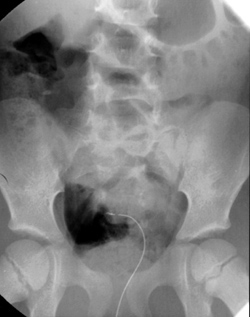 |
|
Preliminary Scout VCUG |
|
| An "early filling" film should be obtained with the bladder filled to 1/3 - 1/4 capacity. This film will allow visualization of a ureterocele which can otherwise be obscured with full distension of the bladder. | 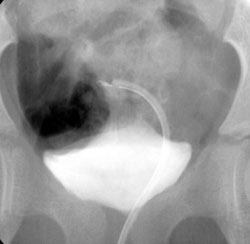 |
|
Early Filling |
|
| When the bladder is nearly filled to capacity, both thirty degree oblique views should be documented. These views allow visualization of the distal ureters as they enter the ureterovesicular junction which, because of their position posterior and lateral, will be obscured on the AP projection. | 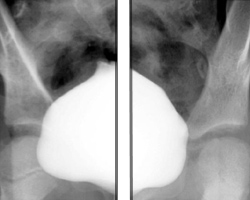 |
|
Right and Left Obliques |
|
| During the act of voiding the urethra should be documented. In the female this can be accomplished with an AP view to include the lower bladder. In the male the penis should be displaced to one side to allow for full visualization of the urethral anatomy. |  |
|
Normal Female Bladder and Urethra |
|
| Finally, careful attention should be made for the presence of reflux during voiding. Reflux may only occur during the higher bladder pressures of active voiding. A film over the kidneys will allow documentation of the presence or absence of reflux and allow for grading of the severity of the reflux. | 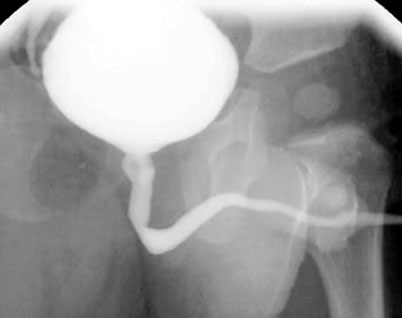 |
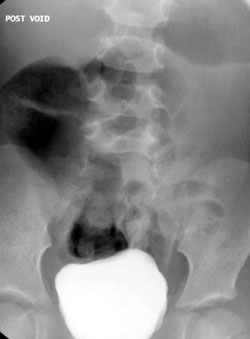 |
| Normal Male Bladder and Urethra | Post void bladder film documenting the degree of post void residual volume. |